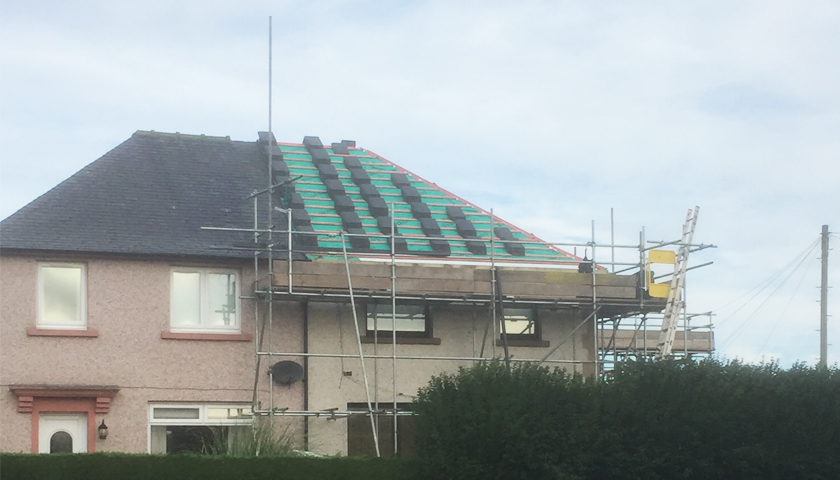The superior quality and breathability of Roofshield condensation control has delivered significant savings in time and cost to a series of sea facing properties in northeast England.
The 35 semi-detached properties at SeaView, Berwick form part of a wider programme of housing stock upgrades to over 200 homes across the region on behalf of leader developer Bernicia Homes.
Matt Rowley, Operations Director for contractor Spring Roofing commented on the reason for selecting Roofshield for the project: “when the initial exploratory examinations were undertaken we identified that the roof structure was fully boarded and that the original specification for a traditional membrane would not have worked without the need for additional roof vents. Roofshield was selected because of its superior quality and breathability. It has an extremely high degree of vapour permeability, as well as air permeability, without the need for additional ventilation. The use of Roofshield provides savings in time and cost and eliminates the need to incorporate a large number of roofing vents. It is also more pleasing from an aesthetical perspective, with no need for penetrations to the roof and felt, and also avoiding the potential for future weaknesses in the performance of the roof.”
Roofshield is recognised as one of the highest performing roofing membrane solutions and has become the preferred choice of architects, developers and contractors. Many vapour permeable underlays use an airtight VP film layer to achieve their performance, whilst Roofshield’s patented SMS (Spunbond Meltblown Spunbond) structure allows high levels of airflow, in addition to the transport of moisture vapour, making the formation of condensation in the roof space virtually impossible. It has an extremely high degree of vapour permeability, as well as air permeability, so will still perform in conditions in which airtight alternatives will not.
Since 2012 NHBC has issued technical guidance which acknowledges that there are some vapour permeable roof underlays that permit both vapour and air
to pass through them. Where an underlay can be shown to provide suitable ventilation, i.e., at least the equivalent of a continuous 5mm high-level slot, NHBC will accept that underlay without the need to provide any further ventilation.
Now, reputable roofing contractors and leading housing developers backed by the NHBC, and independent industry research, agree that some underlays perform
at an exceptional level, providing a failsafe option, without the need for additional ventilation.


